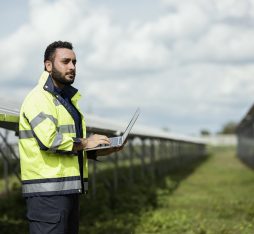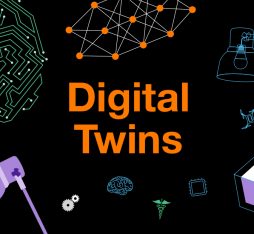Unlike the air and maritime transport sectors, little statistical data is generated by land freight transport, making it currently impossible to see an overview of this sector. However, journeys made by trucks have an impact on infrastructure, urban planning and the environment. The Physical Internet research chair at the École des Mines in Paris asks the question: How can we reduce the carbon footprint of transporting goods? They are working on Orange’s Flux Logistiques project, which aims to find out. The key is in streamlining logistics flows.
A Strict Environment
This research project brings together Orange’s Innovation and B2B teams. It particularly relies on the data science experiments carried out by the Flux Vision teams. Denis Renaud, in charge of upstream research for Flux Vision, explained it in the following way: “We specialize in the statistical analysis of population flows using network data. In the case of Flux Logistiques, we can see the signals emitted by embedded IoT routers to determine the flows of trucks in France. We obtain these results in strict compliance with GDPR regulations. For Flux Vision, we have developed a specific aggregated anonymization algorithm, validated by the CNIL (Commission nationale de l’informatique et des libertés — the French data protection agency) that we have adapted to Flux Logistiques.” A thesis launched as part of the project has a particular focus on these anonymization processes.
Global Vision in Near Real-Time
Flux Logistiques is based on the development of probabilistic models, clustering and recovery measures. “From our side, we collect location events, meaning the trace left by a modem every time it connects to the network to exchange information. As each antenna covers a wide area, we cannot know the exact location of the trace. However, even over a limited period of time, we can see the route taken, the speed of the vehicle, the overall picture of its journey, etc. We build probabilistic models that take this uncertainty into account and we refine it by comparing our data with real-world data coming from experts in the field and partners, including a highway infrastructure operator. The data collected includes toll counts, satellite photos and other information. What interests us is not every individual truck, but the overall view of traffic.”
What Can These Statistics Tell Us?
From this data, we can see the main logistical routes, the origin and destination of vehicles entering a given area, traffic density, and other useful data. Philippe Legay, Head of the Enterprise 4.0 Research Program at Orange and Coordinator of the Flux Logistiques project, explained, “This information is of key interest to logistics players and local authorities. Aggregated in a simulator, it can identify areas for optimization. How can we scale infrastructure? What effects can be expected from a regulatory change? Where can we position a logistics hub and how can we maximize truck loading? Our goal is to produce the most accurate analysis tool possible, so that it can generate as many concrete uses as is feasible.” All of these benefits are already being felt by the Île-de-France region, a partner of the project.
On the Way to Europe-Wide Analysis?
As the amount of IoT equipment in truck fleets increases, so will the usefulness of Flux Logistiques for urban planning, logistics and reducing environmental impact. “We want to build more partnerships with professionals in the sector, especially transport companies able to provide us with use cases and data. Knowledge about the field of land-based logistics is yet to be unearthed, but a solution such as Flux Logistiques can address this lack of statistics. For Orange, it is an opportunity to add value to the data that passes through the network.” The Flux Logistiques project was launched two years ago in France and must now undergo further development with Orange Spain. The team also responded to two European calls for tenders, with the goal of growing this observatory and expanding its positive impact.











